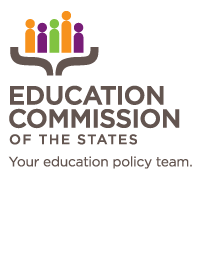In today’s technology-rich world, preserving the American democracy involves ensuring that digital tools facilitate the productive and equitable exchange of information and opportunity, rather than misinformation and division. In recent months, we have observed examples of both cases: young Americans using technology to raise awareness for racial justice and others using those same tools to share falsehoods about COVID-19.
Schools can equip upcoming generations of students to rise above such division by adopting a comprehensive vision of digital citizenship that encompasses the critical competencies to discern fact from fiction, navigate relationships and use technology to champion change. However, researchers indicate that many educators have not been trained on how to embed digital citizenship into instruction.
Fortunately, several districts have risen to the challenge to support educators and ensure that digital citizenship instruction can continue remotely. Below, two education leaders share their stories and recommendations for how states can support district-led efforts through the pandemic.
Susan Enfield, Superintendent of Highline Public Schools, Washington
In our incredibly diverse district, our goal is to ensure that all students can build skills necessary for their future success. Our strategic plan reflected that goal with a commitment to digital citizenship. To that end, we initially convened a cohort of 30 teachers and librarians, who were provided with targeted professional development and developed a tool grounded in the ISTE Standards to assess student knowledge about digital citizenship.
During COVID-19, digital citizenship has become even more critical as more students engage with each other online. In response, we created asynchronous modules that educators can use to learn how to use various tools in line with the ISTE Standards. We also received grant support from the state to integrate media literacy competencies into curricula. This work will officially launch this fall with a team of district leaders and school-based staff.
Tammi Sisk, Instructional Technology Specialist at Fairfax County Public Schools, Virginia
Our strategic plan and instructional framework reflect a commitment to develop students into global and ethical citizens. Aligned to this goal, all educators receive training on digital citizenship through a district-created course. School-based cohorts, including classroom educators, technology specialists, librarians and mental health professionals, are invited to receive specialized training on specific topics relevant to the identified needs of their communities.
Additional efforts are in motion to help educators continue supporting students remotely. We engaged in a curriculum alignment process to allow educators to see where key topics could be embedded into daily routines. We also developed mini digital citizenship lessons adapted for online learning needs. Finally, we are providing families with resources they can use to discuss digital citizenship at home.
Considerations for States:
To ensure that all students have the opportunity to grow as digital citizens, state leaders can supply momentum in the following ways:
-
- Collaborate with stakeholders to communicate a renewed vision around what it means to be a digital citizen. This work requires an increased awareness among district and school leaders that digital citizenship is not limited to online safety skills. The DigCitCommit competencies may be a good starting point.
-
- Support districts in building educator competencies. This includes investments for professional development in pedagogical skills that educators can take into physical classrooms even after the pandemic. Instructional technology specialists should be recruited and retained because their strategic roles in supporting educators’ digital citizenship instruction cannot be overlooked. Funding should place equity at the forefront, as research reveals that educators in low-income areas often have less access to such capacity building opportunities.
-
- Build on existing digital resource hubs to make digital citizenship resources widely available. States can focus on resources that lead to immediately implementable strategies for both classroom educators and families. They can also leverage these platforms to communicate guidance around how to embed digital citizenship into different content areas and daily routines.








